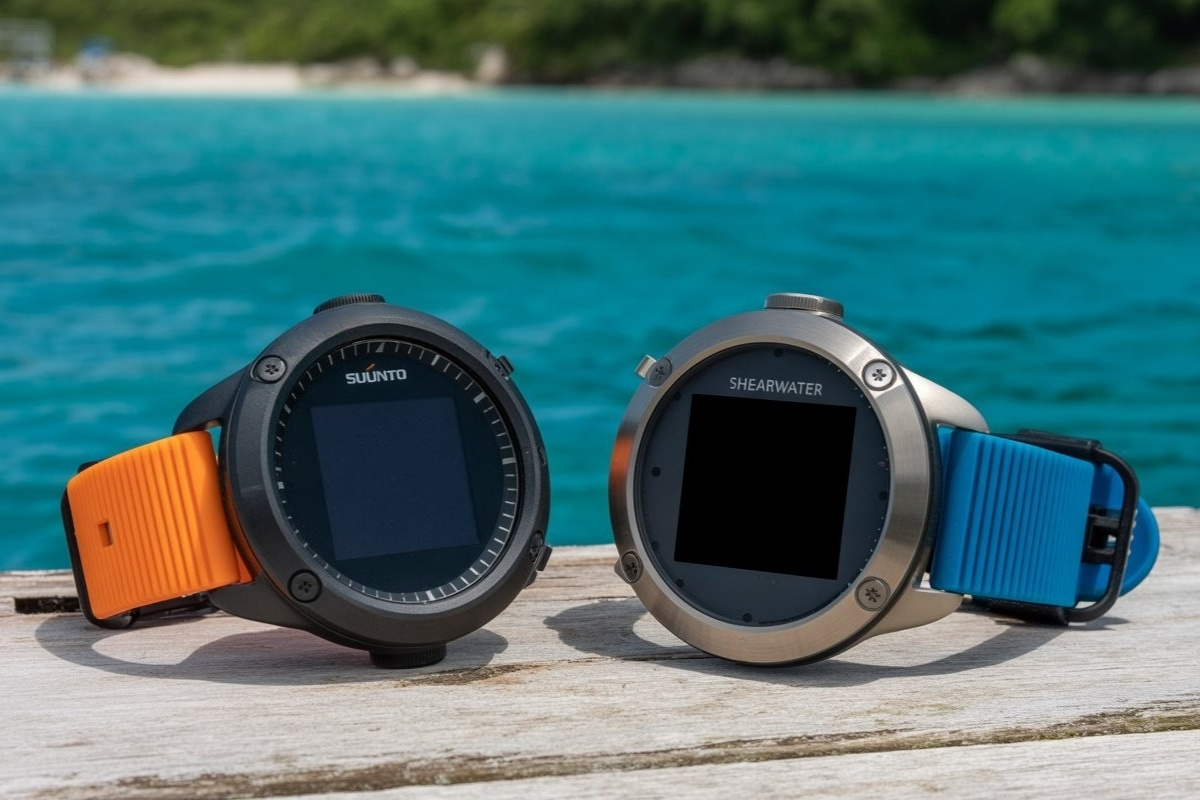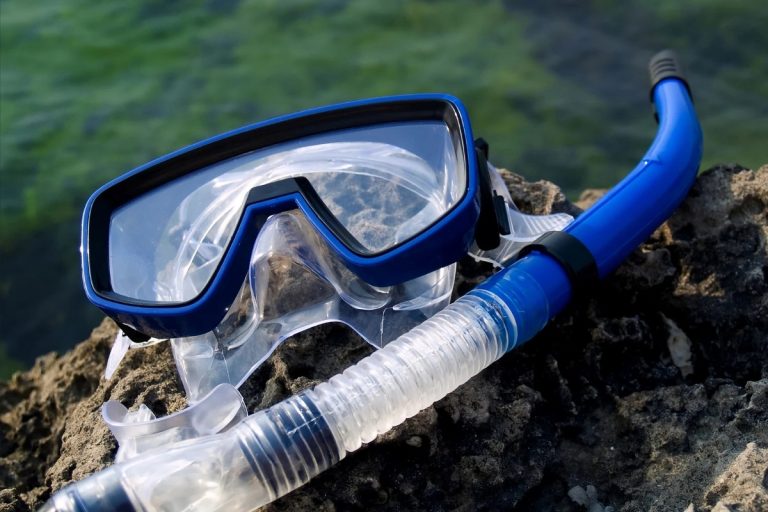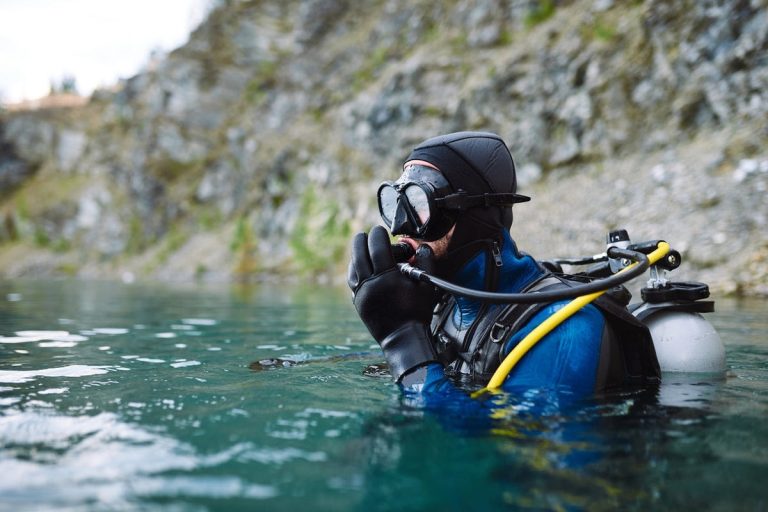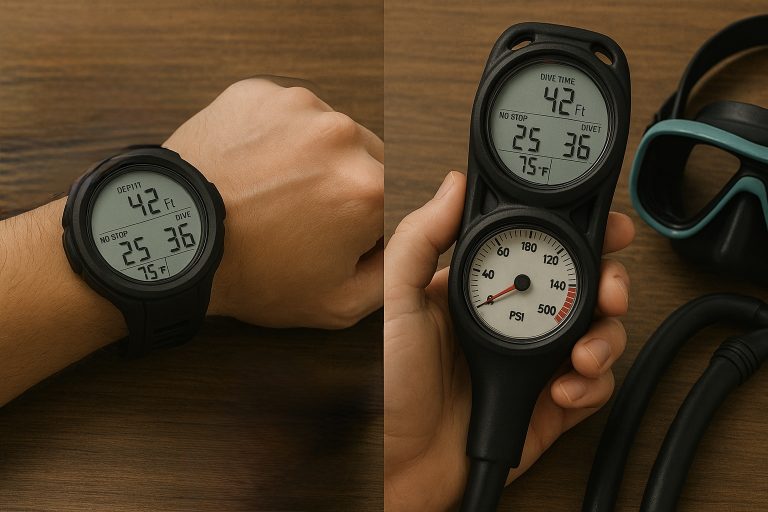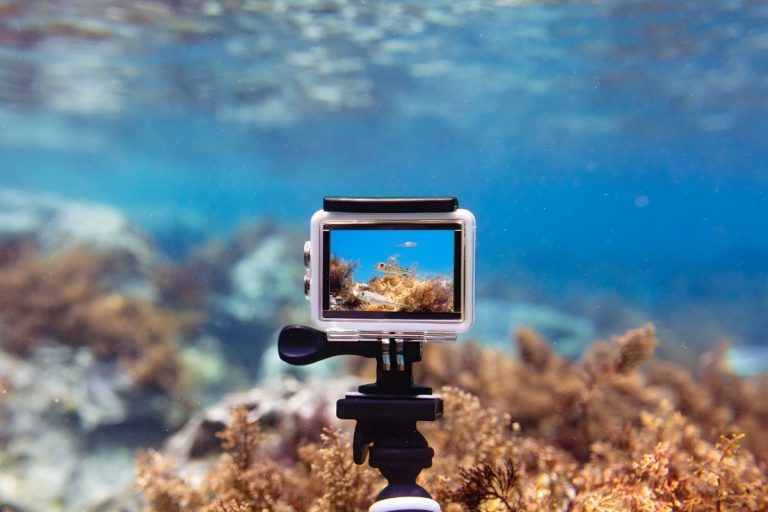- Understanding Modern Dive Computer Technology
- Algorithm Comparison Between Leading Brands
- Comprehensive Suunto Feature Analysis
- Shearwater Feature Breakdown
- Detailed Price Analysis and Value
- Real-World User Experiences and Insights
- Essential Maintenance and Care Practices
- Making Your Final Dive Computer Decision
- Frequently Asked Questions
- Navigating Your Dive Computer Choice
Understanding Modern Dive Computer Technology
What Is a Dive Computer?
A dive computer serves as your underwater safety companion, continuously monitoring depth, time, and decompression status throughout your dive. These sophisticated devices calculate nitrogen absorption in real-time, helping prevent decompression sickness while maximizing your bottom time. Modern dive computers have evolved far beyond simple depth gauges, incorporating advanced algorithms, wireless connectivity, and comprehensive dive logging capabilities.
Think of your dive computer as a personal dive master strapped to your wrist. It tracks multiple gas mixes, surface intervals, and repetitive dive calculations automatically. The device alerts you to ascent rates, decompression stops, and safety limits through visual and audible warnings. Whether you’re a recreational diver or technical enthusiast, these instruments provide critical safety data that manual calculations simply cannot match in real-time underwater conditions.
Importance of Dive Computers for Divers
Safety represents the primary reason divers invest in quality computers. Traditional dive tables provide conservative estimates based on square profiles, but real dives rarely follow perfect rectangular patterns. Dive computers continuously recalculate your nitrogen loading based on actual depth changes, often allowing longer bottom times than tables permit.
Beyond safety, these devices enhance your diving experience through detailed logging and analysis. Post-dive reviews help identify patterns in air consumption, depth preferences, and diving habits. Many divers find this data invaluable for improving their skills and planning future adventures. The convenience factor cannot be overstated either – no more waterproof slates, depth gauges, or timing devices cluttering your gear setup.
Overview of Suunto and Shearwater Brands
Suunto brings decades of Finnish engineering excellence to the diving world, building on their reputation for precision instruments used in extreme conditions. Their dive computers emphasize reliability, conservative safety margins, and user-friendly interfaces that appeal to recreational divers worldwide. The company’s heritage in compass and watch manufacturing translates into robust, dependable underwater instruments.
Shearwater emerged from the technical diving community, initially focusing on rebreather computers before expanding into open-circuit models. Their Canadian-based team maintains close ties with technical divers, cave explorers, and professional dive operations. This connection drives continuous innovation in algorithm flexibility, customization options, and advanced features that serious divers demand.
Algorithm Comparison Between Leading Brands
Understanding Diving Algorithms
Decompression algorithms form the mathematical heart of every dive computer, predicting how nitrogen dissolves into and eliminates from your body tissues. These complex calculations consider multiple theoretical tissue compartments, each with different absorption and elimination rates. The algorithm determines when you can safely ascend and whether decompression stops are required.
Different algorithms produce varying levels of conservatism, affecting your allowable dive times and surface intervals. Some prioritize maximum bottom time while others emphasize additional safety margins. Understanding these differences helps you choose a computer that matches your diving style and risk tolerance. Algorithm selection significantly impacts your diving experience, especially on repetitive dive days.
Suunto Algorithm Overview
Suunto computers utilize the Suunto Fused RGBM algorithm, which combines dissolved gas models with bubble mechanics theory. This approach assumes that microscopic bubbles form during every dive, requiring additional conservatism to prevent bubble growth. The algorithm becomes increasingly conservative on repetitive dives, particularly when making sawtooth profiles or reverse profiles.
The RGBM implementation includes adaptive features that adjust conservatism based on your diving behavior. Frequent deep dives, rapid ascents, or short surface intervals trigger additional penalties that reduce allowable dive times. While some divers find these restrictions limiting, others appreciate the extra safety margins during aggressive dive schedules.
Shearwater Algorithm Overview
Shearwater computers offer multiple algorithm choices, including Bühlmann ZHL-16C with gradient factors and VPM-B options. The Bühlmann implementation allows users to adjust conservatism through gradient factor settings, providing fine-tuned control over decompression obligations. This flexibility appeals to technical divers who want to customize their decompression based on conditions and experience.
The gradient factor system uses two numbers representing conservatism at depth and at the surface. Lower numbers create more conservative profiles with deeper first stops and longer total decompression times. Advanced divers can adjust these settings based on water temperature, workload, age, and personal comfort levels with decompression stress.
Key Differences in Algorithms
The fundamental difference lies in philosophy and user control. Suunto’s RGBM algorithm makes automatic adjustments based on perceived risk factors, removing decision-making from the diver. This approach works well for recreational divers who prefer simple, conservative guidance without complex settings to manage.
Shearwater’s approach empowers divers to make informed decisions about their decompression strategy. The ability to adjust gradient factors, switch between algorithms, and access detailed tissue loading information appeals to technical divers and those who want deeper understanding of their decompression status. However, this flexibility requires education and experience to use safely.
Comprehensive Suunto Feature Analysis
Display and User Interface
Suunto dive computers feature bright, high-contrast displays optimized for underwater visibility across various lighting conditions. The interface design prioritizes simplicity, with large fonts and intuitive menu structures that recreational divers can master quickly. Color displays on premium models enhance information clarity, using different hues to indicate normal operations, warnings, and violations.
Navigation typically involves a few buttons with straightforward menu hierarchies. Suunto focuses on presenting essential information prominently while keeping advanced features accessible but not overwhelming. The user interface philosophy centers on reducing cognitive load during dives, allowing divers to focus on their environment rather than complex computer operations. Advanced features of Suunto dive computers include integrated compass functionality, wireless air integration, and smartphone connectivity for dive log management.
Battery Life and Maintenance
Suunto computers generally offer impressive battery performance, with many models providing 40-60 hours of dive time per charge. Rechargeable models include USB charging cables and clear battery status indicators. The charging process is straightforward, typically requiring 2-3 hours for full capacity restoration.
Maintenance requirements remain minimal, focusing on freshwater rinsing and proper storage procedures. Suunto designs their computers for long-term reliability with sealed construction that resists saltwater corrosion. Regular firmware updates through their mobile app ensure optimal performance and access to new features as they become available.
Health and Safety Features
Modern Suunto computers incorporate comprehensive safety monitoring beyond basic decompression calculations. Features include ascent rate warnings, safety stop timers, and surface interval tracking. Some models add heart rate monitoring and breathing rate calculations when paired with compatible transmitters.
The safety alert system uses multiple notification methods including visual displays, vibration alerts, and audible warnings. Deep stop recommendations, based on the RGBM algorithm, provide additional conservatism for safer ascents. Emergency ascent procedures are clearly displayed when violations occur, helping divers manage potentially dangerous situations underwater.
Shearwater Feature Breakdown
Customizability and User Settings
Shearwater computers excel in customization options, allowing divers to tailor nearly every aspect of their computer’s behavior. Users can adjust display brightness, choose information layouts, set custom alarms, and modify algorithm parameters. This flexibility extends to gas switching protocols, decompression preferences, and safety factor adjustments.
The menu system provides access to detailed settings without overwhelming novice users. Default configurations work well for most divers, while advanced options remain available for those who want specific customizations. Firmware updates regularly add new features and customization options based on user feedback from the diving community.
Display and Readability
Shearwater displays are renowned for exceptional clarity and readability in all conditions. High-resolution color screens present information with crisp fonts and intuitive color coding. The display automatically adjusts brightness based on ambient light conditions, ensuring optimal visibility from bright surface conditions to dark depths.
Information layout prioritizes critical data while providing access to comprehensive details through simple navigation. Multiple display modes accommodate different diving styles, from basic recreational layouts to complex technical diving screens showing multiple gas mixes, tissue loading graphs, and decompression ceiling information.
Integration with Other Devices
Shearwater computers feature robust wireless connectivity options, including Bluetooth integration with smartphones and tablets. The Shearwater Cloud service automatically syncs dive logs across devices, enabling detailed analysis and sharing capabilities. Wireless transmitter compatibility allows monitoring of multiple gas supplies simultaneously.
Third-party software integration supports popular dive logging applications and technical diving planning software. This connectivity enables comprehensive dive analysis, equipment monitoring, and dive planning workflows that serious divers require for complex diving operations.
Detailed Price Analysis and Value
Pricing Range of Suunto Models
Suunto dive computers span a broad price spectrum, with entry-level models starting around $200-300 for basic functionality. Mid-range options typically cost $400-600, offering color displays, wireless connectivity, and comprehensive recreational diving features. Premium models can reach $800-1000, including advanced materials, extended battery life, and professional-grade capabilities.
The pricing structure reflects Suunto’s market positioning as a mainstream dive computer manufacturer serving primarily recreational divers. Value propositions emphasize reliability, ease of use, and comprehensive warranty support. Educational discounts and package deals with other equipment often reduce effective pricing for new divers.
Pricing Range of Shearwater Models
Shearwater computers command premium pricing, with most models ranging from $500-800 for recreational computers and $800-1200 for technical diving units. The higher price points reflect advanced algorithm options, superior display technology, and extensive customization capabilities that appeal to serious divers.
Despite higher initial costs, many divers consider Shearwater computers excellent long-term investments due to their upgrade path, extensive feature sets, and strong resale values. The company’s reputation for customer service and ongoing firmware development adds value beyond the initial purchase price.
Value for Money Considerations
Value assessment depends heavily on your diving goals and experience level. Recreational divers who prioritize simplicity and reliability often find excellent value in mid-range Suunto models. The conservative algorithms and user-friendly interfaces provide safety and convenience without unnecessary complexity.
Technical divers and those planning to advance their skills typically benefit from Shearwater’s flexibility and advanced features. The ability to grow with the computer through algorithm changes, custom settings, and professional-grade capabilities justifies higher initial costs. Consider your diving trajectory when evaluating long-term value propositions.
Real-World User Experiences and Insights
Community Insights from Reddit
Reddit’s scuba diving community frequently discusses dive computer choices, with passionate advocates for both brands. Suunto users often praise the reliability and conservative nature of their computers, particularly appreciating the automatic safety adjustments during repetitive diving. Many recreational divers report years of trouble-free operation with minimal maintenance requirements.
Shearwater discussions focus on customization capabilities and algorithm flexibility. Technical divers share detailed experiences with gradient factor adjustments and multi-gas diving applications. The community values Shearwater’s responsive customer service and regular firmware updates that add new features based on user requests. How to read dive computer metrics becomes crucial when utilizing these advanced features effectively.
User Reviews and Ratings
Professional dive publications and user review sites consistently rate both brands highly, though for different reasons. Suunto receives praise for build quality, battery life, and intuitive operation. Users frequently mention the confidence they feel in Suunto’s conservative approach to decompression management.
Shearwater reviews emphasize display quality, customization options, and technical diving capabilities. Users appreciate the detailed information available and the ability to modify computer behavior for specific diving conditions. Both brands receive high marks for customer service and warranty support.
Choosing Between Suunto and Shearwater
The decision often comes down to diving style and future plans. New divers or those focused on recreational diving typically find Suunto computers provide excellent value with appropriate feature sets. The conservative algorithms and simplified interfaces support safe diving practices without overwhelming complexity.
Advancing divers or those with technical aspirations often prefer Shearwater’s flexibility and growth potential. The investment in advanced features pays dividends as diving skills and ambitions expand. Consider your five-year diving goals when making this significant equipment decision.
Essential Maintenance and Care Practices
Routine Maintenance Procedures
Proper dive computer care begins with thorough freshwater rinsing after every diving session. Salt crystals and contaminants can interfere with button operation and display clarity if allowed to accumulate. Pay special attention to button areas and charging ports, using soft brushes when necessary to remove stubborn deposits.
Storage practices significantly impact computer longevity. Avoid extreme temperatures and direct sunlight when possible. Many divers store their computers in protective cases between trips, preventing scratches and impacts that could compromise seals or displays. Regular inspection of seals and gaskets helps identify potential issues before they become serious problems.
Battery Replacement Guidelines
Rechargeable dive computers require attention to charging cycles and battery health indicators. Most manufacturers recommend avoiding complete discharge cycles and maintaining partial charges during extended storage periods. Battery replacement procedures vary significantly between models, with some requiring factory service while others allow user replacement.
User-replaceable battery models typically use standard watch batteries available from diving retailers. Follow manufacturer specifications exactly, as incorrect battery types can damage computer circuits or compromise water resistance. Professional battery replacement services ensure proper sealing and pressure testing after service. Dive computer maintenance tips include regular battery monitoring and timely replacement schedules.
Troubleshooting Common Issues
Display problems often result from impact damage or seal failures allowing moisture intrusion. Condensation inside the display indicates immediate service requirements to prevent permanent damage. Button malfunctions frequently stem from salt buildup or worn seals that allow water penetration during dives.
Algorithm violations or persistent error messages may indicate sensor problems or software issues requiring manufacturer attention. Never attempt diving with a malfunctioning computer, as unreliable depth or time information creates serious safety risks. Most manufacturers provide diagnostic services and repair estimates for damaged units.
Making Your Final Dive Computer Decision
Factors to Consider When Choosing
Your current certification level and diving experience should heavily influence computer selection. Advanced Open Water divers with plans for further training benefit from computers that can grow with their skills. Consider whether you prefer wrist-mounted vs console dive computers based on your gear configuration preferences and diving style.
Budget considerations extend beyond initial purchase price to include accessories, maintenance costs, and potential upgrade paths. Factor in transmitter costs for air integration, protective cases, and charging accessories when calculating total investment. Extended warranty options provide additional peace of mind for expensive technical diving computers.
Personal Preferences and Diving Style
Conservative divers who prioritize safety margins over maximum bottom time often prefer Suunto’s automatic algorithm adjustments. The peace of mind from knowing your computer is making conservative decisions can enhance diving enjoyment and reduce anxiety about decompression management.
Aggressive divers who want maximum flexibility and detailed decompression information typically gravitate toward Shearwater computers. The ability to adjust conservatism levels and access detailed tissue loading information appeals to divers who want active participation in their decompression management decisions.
Making the Right Investment
Consider your diving frequency and typical dive profiles when evaluating features and pricing. Occasional vacation divers may find basic computers perfectly adequate, while frequent divers benefit from advanced logging, connectivity, and analysis capabilities. Technical diving aspirations justify investment in computers with appropriate algorithm options and gas switching capabilities.
Research manufacturer support policies, warranty coverage, and local service availability before making final decisions. The best computer is worthless if you cannot obtain service or support when needed. Choose reputable dealers who can provide ongoing assistance and advice as your diving evolves.
Frequently Asked Questions
What is the main difference between Suunto and Shearwater dive computers?
Suunto computers prioritize conservative safety margins and user-friendly interfaces, making them suitable for recreational divers, while Shearwater offers advanced customization and flexibility, appealing to technical divers.
How do the algorithms of Suunto and Shearwater differ?
Suunto uses the Fused RGBM algorithm, which is conservative and adjusts automatically based on diving behavior, while Shearwater allows users to select from multiple algorithms and customize conservatism settings.
What is the price range for Suunto and Shearwater dive computers?
Suunto models range from $200-1000 depending on features, while Shearwater models generally range from $500-1200, reflecting their advanced technology and customization options.
What maintenance is required for dive computers?
Regular maintenance includes rinsing with freshwater after dives, proper storage, and monitoring battery health. Some models may require professional battery replacement.
What should I consider when choosing a dive computer?
Consider your diving experience level, budget, preferred features, and whether you prioritize safety or customization in your diving experience.
Navigating Your Dive Computer Choice
Selecting the right dive computer involves understanding your diving needs and preferences. Whether you lean towards the reliability of Suunto or the flexibility of Shearwater, aligning your choice with your diving style and future aspirations will enhance your underwater experiences.
